STANDING STORIES
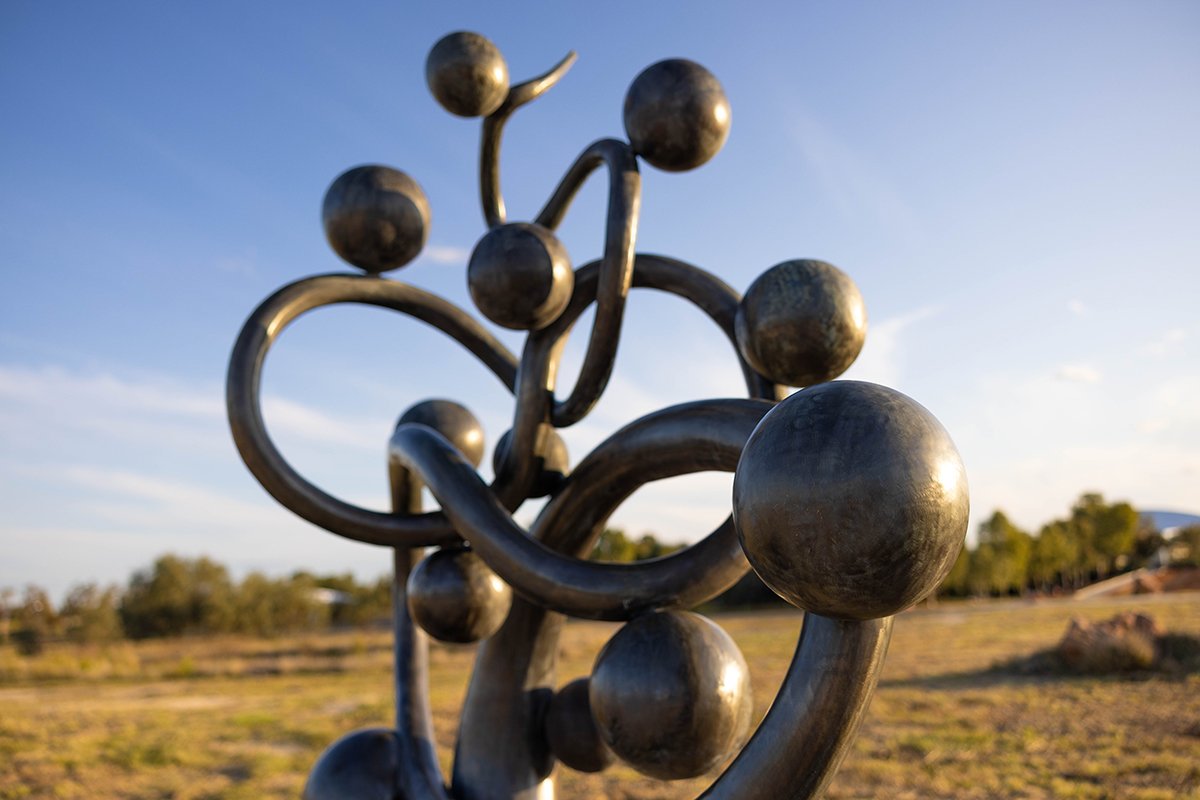
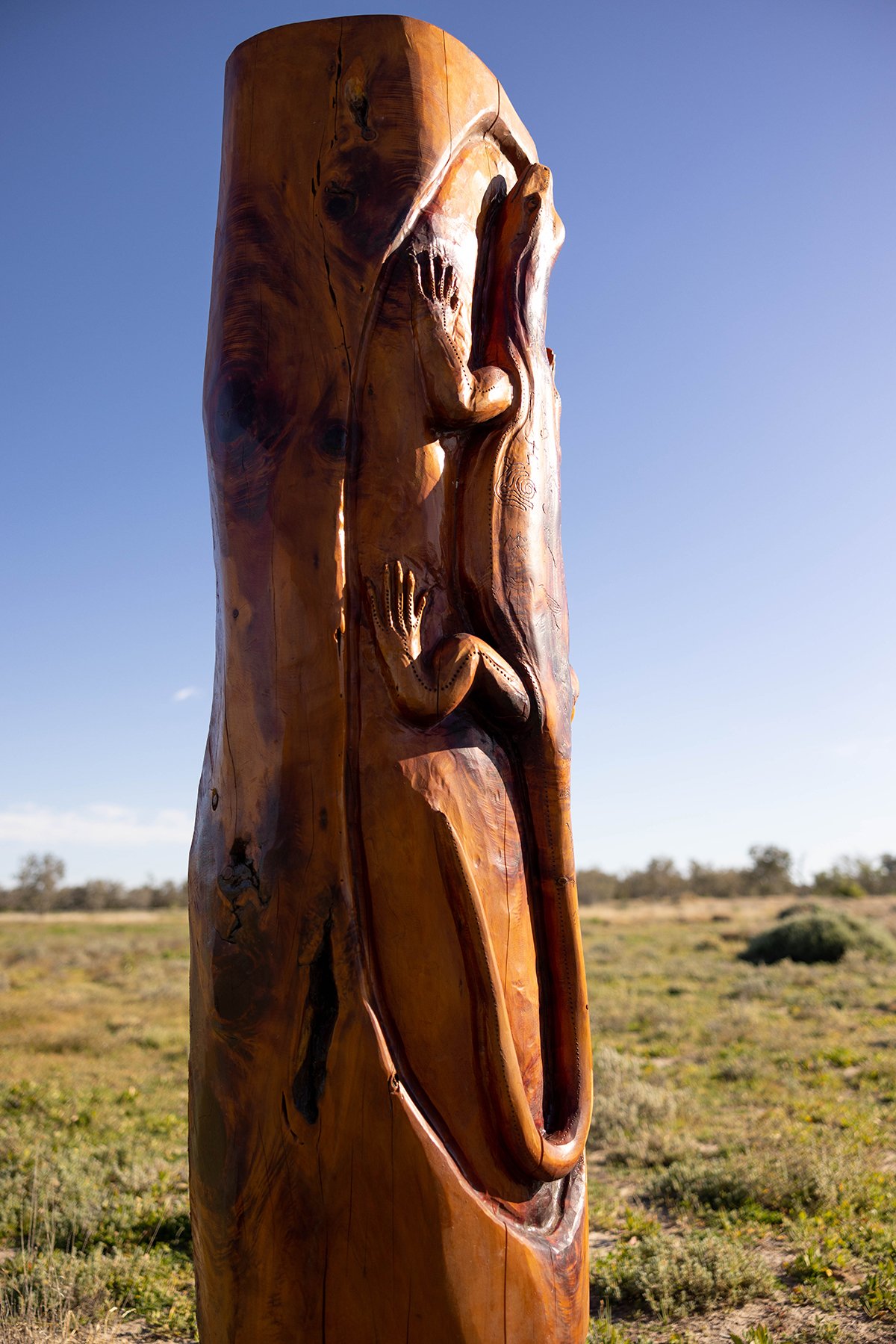

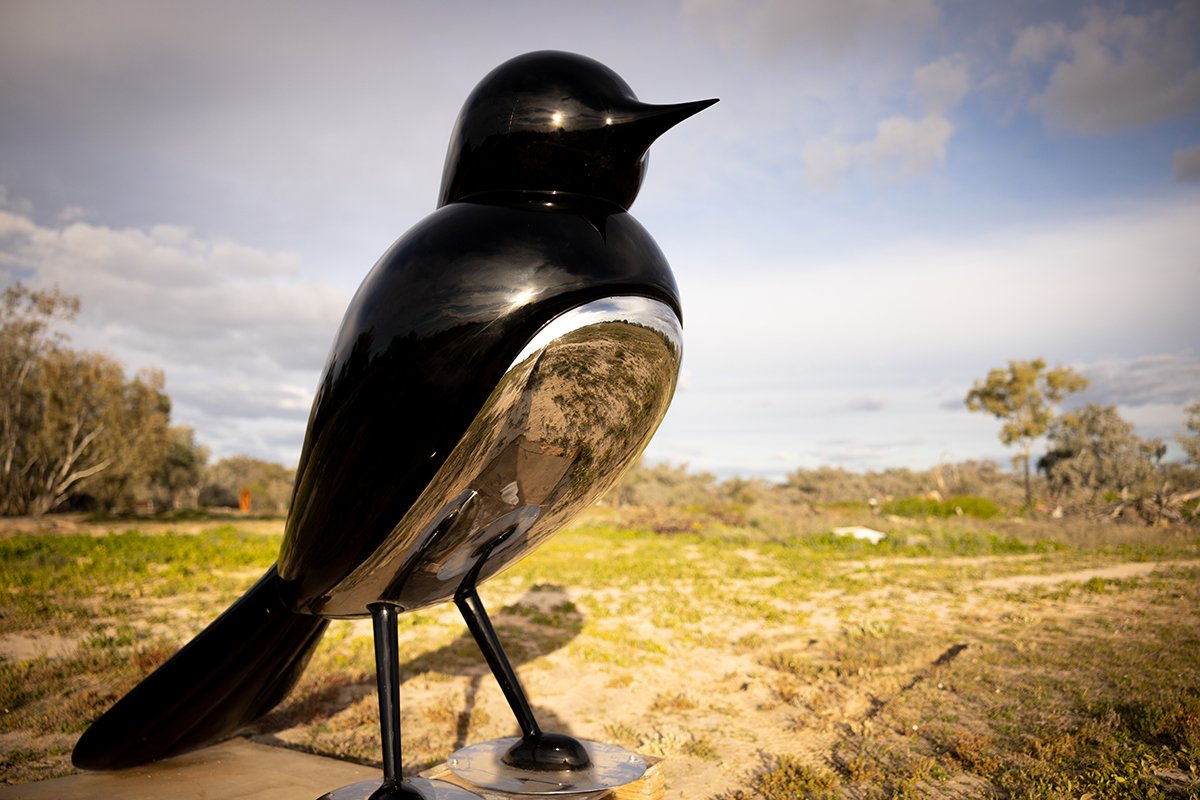

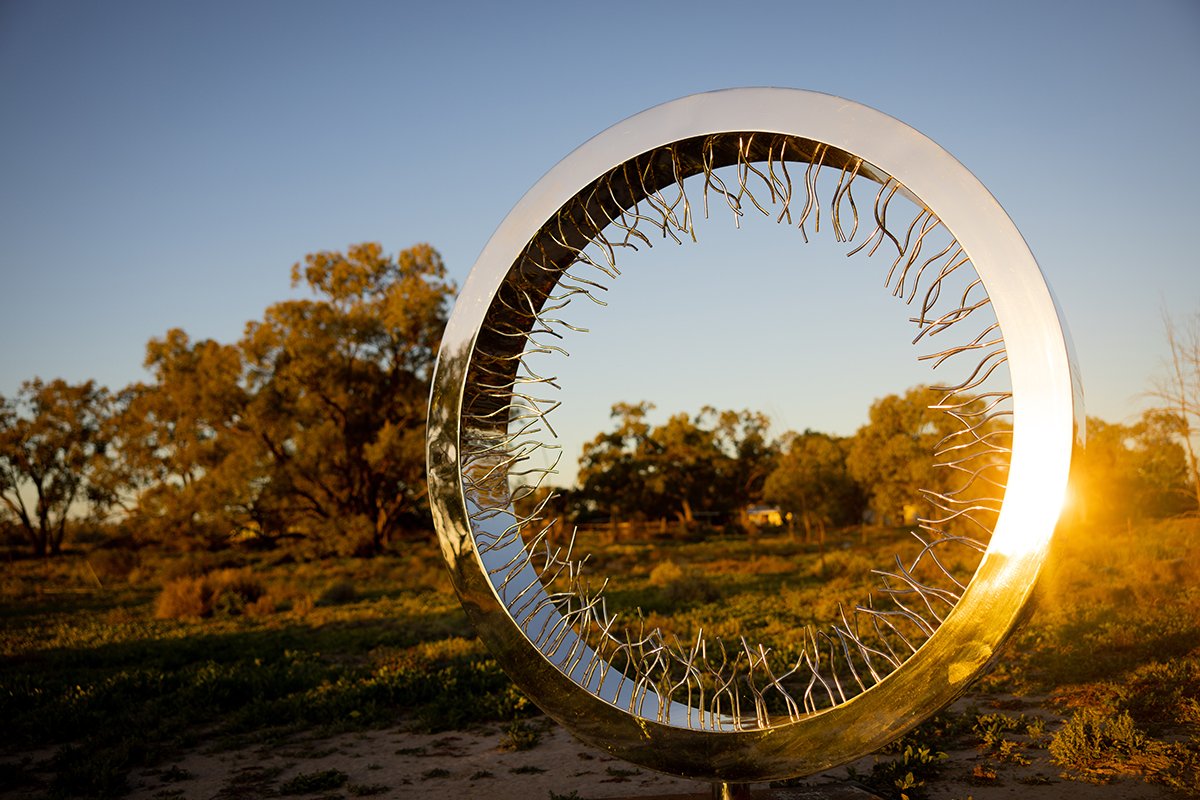
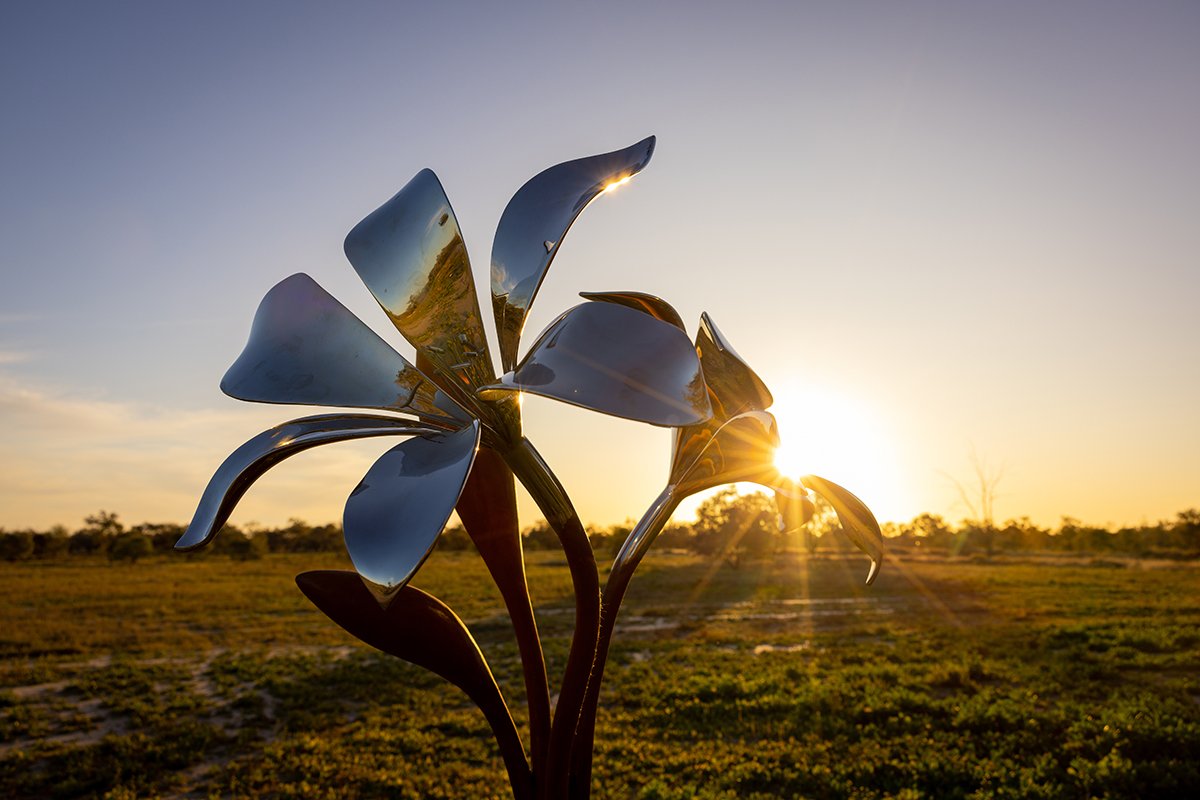
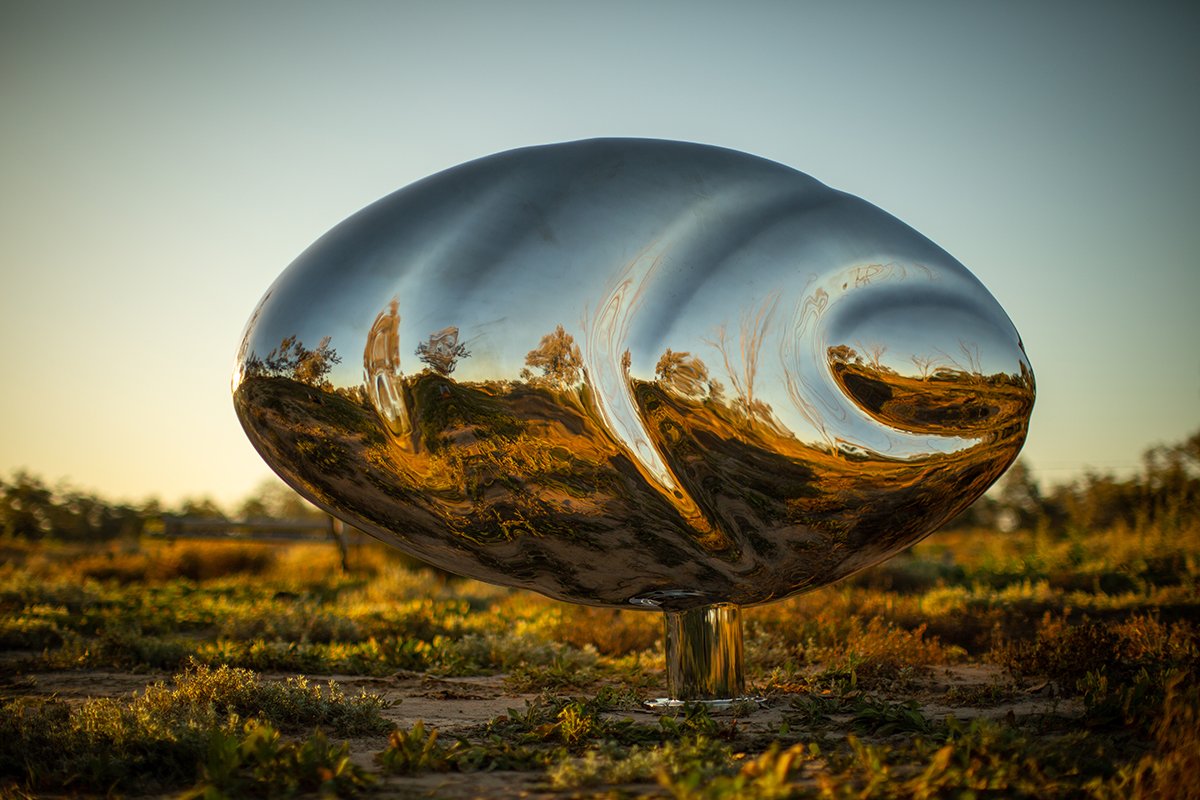
Standing Stories is an outdoor gallery of three-dimensional artworks (sculptures) installed at the 'Back O Bourke' Exhibition Centre, in Bourke NSW.
The sculptures each represent a story or perspective from a local Aboriginal person or family in the area. Bourke has a significant Aboriginal population of over 20% with an estimated 22 language groups represented in the shire.
These sculptures, and the stories they represent, provide a focal point for the community to learn more about the history of the region as it pertains to Aboriginal people and cover aspects such as spiritualism, symbolism, and even philosophies or world views.
For each of the works, there is an accompanying short film that tells the story of the work from the perspective of the participant and is accessible via a mobile device through a QR code, providing a deeper, and closer experience for the viewer.
Created through partnerships between the lead artist and the subject participants over a five-year period between 2017 and 2022, the works will ultimately take their place in a 'sculpture trail' near their current location.
Puldri Thulli
Jason Dixon
Ngemba, Wongkamurra
“I belong to two distinct groups, the Ngemba is my mothers tribe, and Wongkamurra which is my fathers tribe. The Wongkamurra occupied the area around North West NSW, South West QLD, right up in the channel country.
“During the time of the policy of assimilation, people were removed from their country to mission settlements like Brewarrina, that’s what happened to my Great Grandmother.
“In the 1970’s linguists were documenting a lot of language groups that were around in Bourke. My Great Grandmother was one of the confident ones who were able to speak about her language. She made 62 tapes recording all aspects of the Wongkamurra language, including names, flora and fauna, etc. These tapes show that the language is very descriptive, the language explains what the object or medicine does.
“In English, this object is a shield which is quite a broad term. In the Wongkamurra language, this is called ‘Puldri Thulli, which approximates to ‘cover and protect your meat’, meaning ‘protect your body, your vital organs.
“Understanding the different approaches to language is important because it is the start of understanding other cultures. This is the starting point for the questions to begin, and for the answers to be delivered.”
“This story represents one of the most fundamental issues with understanding different cultures - the framework, or architecture of language. I really had to stop and think about all the implications behind approaching something, anything, with only the cultural ‘lens’ that I had been given – we all do this of course, but if we want to understand the world better, we need to try to overcome our inherent biases. That this object is used to deflect and protect makes it the perfect device for telling this story, which Jason and Joseph understand and have employed so well. In addition, it is just such a beautiful form and object in its own right.”
Carved Cypress Macrocarrpa | Designed by Andrew Hull | Crafted by John Brady
Stitch by Stitch
Kristy Kennedy -
Barkindji, Ngarrindjeri
“My Grandmother, Eileen Mackay was a wonderful artist, she could paint anything that was put in front of her. She was also a well respected traditional Aboriginal weaver, and she would teach other people who wanted to learn how to weave, so she was also an educator.
“She would tell stories while she wove, and we would sit there and listen and learn how to do the practice of weaving, but also we were taking on the stories of the culture, which was important even if we didn’t know it at the time.
“Weaving is a very special process, and I think about my Grandmother every time we do it. The way we learned relates to the phrase ‘Stitch by Stitch’ because as you take the reed out through the basket or object, and then back over towards yourself, you stitch the object to yourself, metaphorically. In this way you invest yourself in the object, it is no longer just ‘a thing’ but it becomes part of you, and you become part of it, stitch by stitch.
“This is a way of understanding traditional approaches to resources, and to utilising the natural landscape.
If you invest yourself in this landscape, you will care for it more deeply, if what you make is a part of you, it means more when you share it, give it away, or use it.
“There is a lot of responsibility, but a great honour to be sharing the knowledge that I have been given, with my family, and with other people who want to learn.”
“This story invites the listener to slow down and think about what it is we do with our life, to be present, and to pay attention. An object is not just an object, it has meaning as well as a use, it has the creator invested in it, it has knowledge behind it. This structure, though simple, is actually quite difficult to create, and there were many drafts before arriving at this final form, and importantly, the material and process to make it, all of which needed to reflect the story in some way.”
Corten steel | Designed by Andrew Hull | Fabricated by Wangstone Studio
Paalampaltharu
Minnie Kelly via Max Crozier,Joanne Kennedy, Ian Taylor, Andrew Hull- Kurnu Barkindji
“This sculpture is made for a woman that we never met, though know strange and intimate details about, and who, amongst others, we owe our existence to.
“We know that of eleven possible eye colours, hers was ‘number 8 – light brown’, and that the external, median and internal eye folds were all similarly categorised, along with Eye Obliquity, whatever that is.
They did not measure what her eyes looked like when she smiled. There are enough recorded measurements of her bone structure to attempt a reasonable reconstruction, though we don’t know how she stood, walked or sat.
“These details were recorded at the Brewarrina Mission in July 1938 by the anthropologist and genealogist, Norman Tindale, though she was not from Brewarrina.
“Mrs Kelly (Minnie), was born at Kallara Station and was identified as a member of the ‘Gu:Nu’ (Kurnu) tribe. The record shows that she spoke English in company, and her native tongue while at home, and a handwritten notation indicates what it was that she said.
“My country starts at Tilpa and Louth down from Bourke on Darling River. I am a Barkindji, a person of the Barka or River.”
“A very personal story for me, and for my family, but also a common story of the region, with many families being taken off country to the Mission at Brewarrina. This sculpture represents our Great, Great Grandmother, Minnie Kelly, and the Kurnu-Barkindji. This white flower, known as the Darling River Lily, is endemic to the floodplains of the Darling, and belongs to, and survives in that soil, as does her story. The two blossoms represent the Warrego and Darling converging within the traditional lands of the Kurnu-Barkindji.”
Corten steel and polished stainless steel | Designed by Andrew Hull | Fabricated by Wangstone Studio
Thulii
Dot Martin - Ngemba
“My family originated from Gundabooka. We weren’t able to get back there much when I was a kid, we didn’t have a car and it was a long way in those days.
“The boys in the family were told more of the stories of the family than we were, but we have been able to learn the stories as we grew.
“Gundabooka is a very spiritual place. The rock art depicts ceremonies, the fish-traps at Brewarrina, and the traditional animals.
“The paintings are very significant for the Ngemba people and can be found at Gundabooka and Mt Grenfell (near Cobar).
“This sculpture represents the totem of my family, Thulii the sand goanna, and also the evidence of Aboriginal people which is often indicated by scarred trees. The rock-art at Gundabooka.
“The patterns on the goanna’s back are representative of the rock art at that can be found Gundabooka, and connects my family to the art, to the landscape, and to the people who traditionally belonged there.”
“Aunty Dot was the first person I thought of to be involved in this project, and I wanted to make sure she was recognised as a quiet authority within the community. We tried a few stories out before we settled on the most obvious one, her totem, and the significant place she is connected to – Gundabooka. The volume and weight of the object suspended this way gives it a gravity that draws you towards it, and invites the quiet contemplation of symbols, evidence, and what makes up the story of someone’s life.”
Carved Cypress Macrocarpa | Designed by Andrew Hull | Crafted by John Brady
We all go together
Phillip Sullivan - Ngemba
“It all starts with the totem, mine is the yellowbelly (Golden Perch) – its the totem that we’ve been given, and each family would have been given a totem.
“The yellowbelly is in the river, and he has to keep swimming forwards, he can’t go backwards, or his gills
will fill up and he will not be able to breath, he’ll die.
“What this tells me is that I also can’t go back, I have to keep going forward. In my life here in this town, I need to keep moving forward like the yellowbelly in the river, but there are many other fish in the river. There’s the cod, the black-bream, the silver perch, just like there are many other peoples and cultures in Bourke, where there are over 20 different language groups represented…there’s even the European carp.
“We are all the same, we all need to keep moving forward, no matter what kind of fish we are, what kind of person we are, we all need to move forwards.
“Sometimes, when the water is low, there are more obstacles, things which slow us down, so we turn and move in circles, we bump in to each other. In trying to keep moving forward we get confused and have to learn how to share each other’s space.
“But the river rises, the obstacles fade away, and we get a chance to move forward, upstream again. But we all have to go together, all the different fish in the river, all the different people in Bourke, we all have to move forward together.”
“I have loved this story since I first heard it, and I’ve tried many ways to share it. An insightful and important philosophy for Bourke, and a reminder that there is meaning in the world if you want to find it. This abstracted fish shape is beguilingly simple, but the polished stainless steel gives it a whole different life. Every small movement around the object changes its reflections and form and gives it movement, which reflects the story itself.”
Polished Stainless Steel | Designed By Andrew Hull | Fabricated by Wangstone Studio
Ritjuruki
Maxine Mackay - Barkindji, Ngarrindjeri
“My mother’s totem is Nori, which is the pelican, but the Willy Wagtail is the message bird. It brings stories, whether that is good news, bad news, trouble, it talks to us. For some groups it is a death-bird so they shoo it away, but for us it is a comfort.
“I know the differences with how they are communicating, I can hear it in the different chirping sounds. It’s a comfort because to me, it means that my mother is around – and that makes it a very spiritual bird.
“He’s a hyper-vigilant little bird, he always knows what’s going on and he lets everyone know when things are happening around you. This is probably why people paid attention to this, in the same way that traditional people learned to read the other signs of nature. This has grown into a stronger spiritual connection because of this.
“This is important because it teaches us to pay attention to what is happening around us, to listen for the clues that are present in nature, to respect and protect our natural world, and to draw spiritual connections to it.
“Ritjuruki is the name for the Willy Wagtail in the Ngarrindjeri language.”
“I interviewed Maxine and a number of other Aboriginal artists and knowledge-holders for the ‘Living Arts and Culture’ project, and I always had this experience of a spirit world running parallel to our physical world. This story represents it so well, and resonates with so many, because we all place different spiritual, and cultural meanings on things we encounter in the natural world. The challenge, as an artist, was to create a form that wasn’t just ‘the bird’ but to be fully contained aesthetically. So the simple ‘tear-drop’ form of the body is repeated over and over – the head from the side and top, the tail, the chest, are all the same shape arranged together to create the form.”
Painted polished stainless steel | Designed by Andrew Hull | Fabricated by Wangstone Studio
The long path to school
George Orcher - Kooma
“It was about thirty years before I found my ancestors tribe, Kooma. Before that, we thought we were from Weilmoringle, and that out story began with Nan and Pop.
“My Nan and Pop were taken from their land, and were being transported to Cherbourg Mission, when they escaped at Bollon and made their way down to the Nebine River. On his way down to Weilmoringle,
Pop worked on various stations all along the river. My Uncle Ross was named after Rossmore station. On this journey my uncles took jobs and made their homes on these stations, raising their families there.
“My father, Dudley, came down to Weilmoringle with Nan and Pop, and that’s where he made his home, and his life, that’s where we were born. Weilmoringle is 180 kilometres to Bourke, and over 100 kilometres to Brewarrina which is where the nearest schools were. With seven children in the community, we needed a school of our own, but the department wouldn’t provide one unless we had thirteen kids to educate.
“So my father went back along the route taken by his father, and re-connected with his brothers and sisters, who all had children as well. He was able to bring the nieces and nephews back to Weilmoringle on horseback, for the school to be viable, and the community to have its own school, which is when Weilmoringle became a town and not a camp.”
A wonderful story underpinned by the terrible reality of Australian history. I had to listen many times before I began to grasp the depth of meaning and importance of this story. This complex structure attempts to convey the movement of the family, the twists and turns of life, the course of a river. The globes are the thirteen children who ultimately benefited from the long and twisted course of this family’s life.
Burnished Bronze | Designed By Andrew Hull | Fabricated by Wangstone Studio
Mundaguddah
Brian Smith - Kunya
“Growing up as a child, my Grandmother and all the old people would say ‘Don’t go near the water, or the Mundaguddah will get you’ – and it worked.
“We grew up next to the river, we were there all the time. We’d lived on the reserve all our lives, and the river is right there, so that was our go to place. We’d swim there, fish there, swim across to the weir. But always in the back of our minds, ‘Mundaguddah’ – particularly if there was a bit of a rise in the river, a bit of uncertainty, then you would be told not to go near the water, because the Mundaguddah would be there.
“I’ve heard it described as a serpent, sometimes even heard it connected to the rainbow serpent story, and its definitely got connections up in Kunya country, where my family came from. But all the rivers around here, the Warrego, the Paroo, they all have clans and people that belong there and they are all represented in Bourke, and they all have a story about the Mundaguddah. It may have different stories associated, but when you say that one word, it always means the same thing ‘stay out of the water’.
“Those stories are important to our mob, and they kept us alive. In the simplest way, don’t be near a dangerous place, like the river, without supervision. The sculpture has a gaping maw-like mouth and thousands of teeth like a cod, it could swallow you whole.”
We tried several designs to represent the way this story can be found in lots of different places with slightly different variations, even a nest of twisted snake-like forms. However, the task was to imagine fear itself, or imagination itself, because this story is deep and vivid in the imaginations of people who have heard it. The best approach we could make was to simplify the form down to one of the most universal, a simple circle…but with the suggestion of teeth of a cod-fish, or river monster. On this, and within it, all versions of the story can be projected, and reflected.
Polished stainless steel | Designed by Andrew Hull | Fabricated by Wangstone Studio
